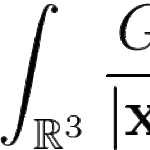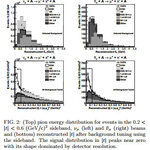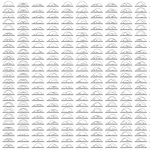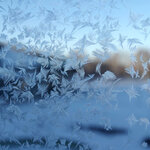Physics

Each January, I scamper out of the basement and talk to folks during MIT's Independent Activities Period. The Alumni Association is the sponsor (no one from the physics or math department is inviting me).My hope is to limit the jargon but point out different branches of physics. Sometime around 2:30 on Friday, I will create a Google Hangout, so if you wish to tune in, find me on Google+ and hopefully I can get that to work and maybe even record it. To be honest, I have made little progress on the software due to the craziness of everyday life, but I am liking my minimal-jargon out…

This morning I woke up at 6AM, had a shower and breakfast, dressed up, and rushed out in the cold of the fading night to catch a train to Mestre, where my car was parked. From there I drove due north for two hours, to a place in the mountains called Pieve di Cadore. A comfortable ride in normal weather, but this morning the weather was horrible, with an insisting water bombing from above which slowly turned to heavy sleet as I gained altitude. The drive was very unnerving as my car is old and not well equipped for these winter conditions - hydroplaning was frequent. But I made it.The place…
In 1973, during a symposium to celebrate the 500th birthday of Copernicus, Brandon Carter, a post-doctoral researcher in astrophysics at the University of Cambridge, tweaked his audience by stating that humanity did indeed hold a special place in the Universe - the exact opposite of what scientists from Copernicus on have said.
Since then, it has gone in and out of fashion, and the Anthropic Principle, as it was called, was most recently embraced in some M-Theory flavors of string theory.
Why? It may be science, it may be a misuse of statistics. A misuse of statistics is to say, for…

The CMS Collaboration at the LHC collider has recently measured a non-negligible rate for the fraction of Higgs boson decays into muon-tau pairs, as I reported in this article last summer. The observation is not statistically significant enough to cause an earthquake in the world of high-energy physics, and sceptics like myself just raised a gram of eyebrows at the announcement - oh yeah, just another 2-sigma effect. However, the matter becomes more interesting if there is a theoretical model which allows for the observed effect, AND if the model is not entirely crazy.The latter seems to be…

There is no more important universal problem in the Standard Model of elementary particles than the problem of mass and mixing flavor hierarchies.
The mainstream theoretical approach for treating it is to probe different group-symmetry flavor models. For decades, this math approach has not led to established flavor theory.
Is seems reasonable at this time to view flavor concept as related to new physics fundamental paradigm that should be firstly approached by simple means of semi-empirical phenomenology as exampled by physics history of e.g. quantum mechanics (Plank, Einstein, De-Broglie,…

Just a placeholder
and another
H1
H2
H3
H4
H5
H6
Just regular text
A link
V(\mathbf{x})=-\int_{\mathbb{R}^3}\frac{G\rho (\mathbf{r})}{\left|\mathbf{x}-\mathbf{r} \right|}dv(\mathbf{r})
V(\mathbf{x})=-\int_{\Omega }\frac{G\rho (\mathbf{r})}{\left|\mathbf{x}-\mathbf{r} \right|}dv(\mathbf{r})
\mathbf{F}=\frac{d\mathbf{p}}{dt}
\mathbf{p}=m\mathbf{v}
\frac{d\mathbf{p}}{dt}=\frac{dm\mathbf{v}}{dt}=m\frac{d\mathbf{v}}{dt}+\frac{dm}{dt}\mathbf{v}=m\mathbf{a}+\frac{dm}{dt}\mathbf{v}
\mathbf{F}=m\mathbf{a}
\frac{dm}{dt}\mathbf{v}=0
\frac{dm}{dt}=0
E_{ph}(r)
\frac{GM}{r^2}
m_{ph}=\frac{E_{ph…

Neutrinos almost never interact, 10,000,000,000,000 neutrinos pass through your hand every second but fewer than one actually makes contact with any of the atoms inside us.
When neutrinos do interact with another particle, it happens at very close distances and involves a high-momentum transfer. Mostly. Physicists have found evidence that these tiny particles might be involved in a weird reaction, even for neutrinos. A paper in Physical Review Letters shows that neutrinos sometimes can also interact with a nucleus but leave it basically untouched - inflicting no more than a "…

Theories of everything in Physics by their nature need to be theories of almost anything. How can we call a theory which is so hard to test we can't test it, right now, science? George Ellis and Joe Silk have stated in Nature that we really should not call such theories science. That they are more like pure mathematics. My fellow Science 2.0 blogger,Johannes Koelman, addressed this earlier. In this blog I will attempt to show by simple boolean logic that science can be science even if we don't have the technology or just the creative thinking to devise an experiment to check it.…

Apologizing for the silence of last week, due not so much to Christmas holidays but to my working around the clock to write a grant proposal, I wish to show you today a graph which describes very well the complexities of modern day frontier theoretical calculations. That graph is the collection of some of the Feynman diagrams that have to be calculated in order to evaluate a property of the electron called its "anomalous magnetic moment".
An anomaly, in quantum field theory jargon, is the lack of a symmetry of a physical system at the quantum level, when the same system before quantization…

Frozen cold but not the way beyond absolute zero. Flickr/kriimurohelisedsilmad , CC BY-NC-SA
By Tapio Simula, Monash University
Absolute zero is the temperature (-273.15C) at which all motion in matter stops and is thought to be unreachable. But recent experiments using ultracold atoms have measured temperatures that are, in fact, negative in absolute temperature scale.
The journey there, however, is quite the opposite to what you might expect. Simply removing heat from the equation to make things colder and colder is not the answer. Instead, you need to heat things hotter than infinitely hot…